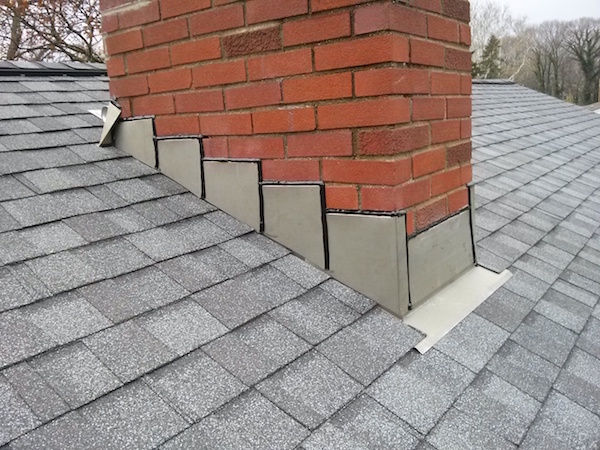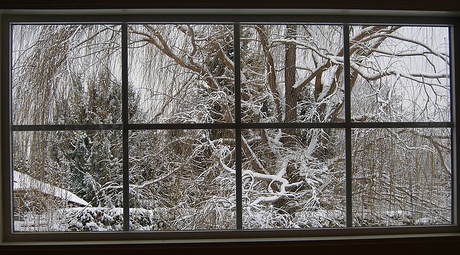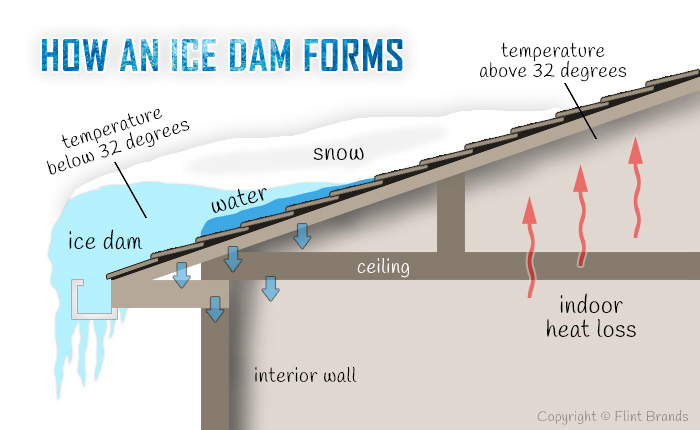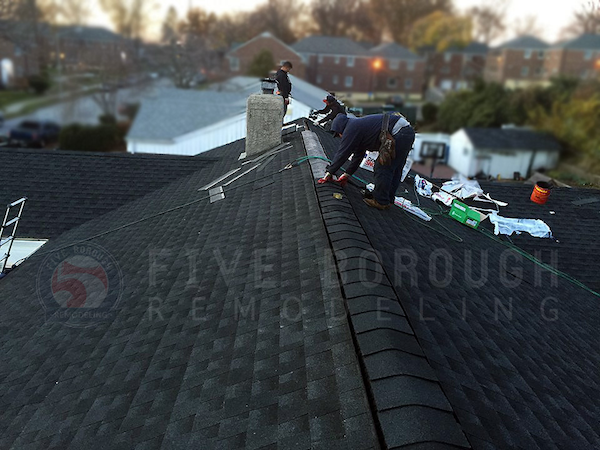
Proper Roof Flashing
One of the largest causes of leaks in roofing in Brooklyn and Queens that we see are the areas where the roof intersects with walls, skylights, pipes, vents, and more. These penetration points can cause a world of problems if cheap materials or improper flashing methods are used to seal off these intersections. It’s important that as a homeowner you know the correct way of getting it done when it comes time to replace your roof, so you can ensure it gets handled properly.
Ice and Water Shield
It’s important to install a leakproof barrier directly onto the roof deck and slightly up the intersection as a last line of defense in case water get’s beneath the flashing. Many contractors still use tar paper, which can still cause leaks where the nail penetrates the paper. We choose to use GAF’s Ice and Water Shield in these vulnerable points to make sure it’s sealed properly and the wood below is protected. It is self sealing like a run flat tire, so when a nail goes through, it seals around the nail not allowing any water to pass through to the wood.
Aluminum Flashing
On most intersection, with the exception of vent pipes, the intersecting point is protected by a bent piece of aluminum called an aluminum flash. This sits right into the intersection so that if water get’s between the shingle and the intersection, it doesn’t go directly to the wood. Where the flashing goes up the wall, it can be sealed into harder surfaces like brick, or tucked underneath for softer materials like vinyl siding.
Pipe Collars
When a vent pipe is coming out of the roof, we must use a pipe collar to flash it properly since aluminum won’t fit around a small round intersection. Many roofing contractors will use a rubber pipe collar. Over time, like all rubber, it becomes dry rotted and cracks, allowing water to get through. At Five Borough, we opt to use a pipe collar made of Neoprene, the same material used for wet suits. It won’t wear out and crack over time, ensuring you’re pipes are sealed up properly from the start.
Shingles/Cap Sheet
Once the intersection is covered with ice and water shield and proper flashing, then the shingles are cut to go right into the intersection where the aluminum flash is bent. The shingles are installed as they usually are, with nails securing them on top, and a tar strip sealing it to the row below on the bottom.










 (347) 974-4445
(347) 974-4445 Get an Estimate in Less than 24 Hours!
Get an Estimate in Less than 24 Hours!